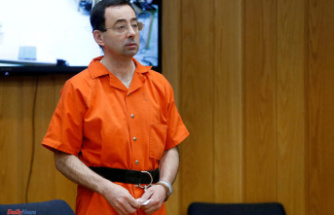Since the Hollywood Academy began its journey in 1927 one of its objectives, in addition to delivering the Óscar, it was inaugurated a museum dedicated to the cinema that will open its doors over 90 years later with a spectacular building designed by the architect Renzo Piano.
Although other cities in the world such as Paris, Beijing and Turin (Italy) have counted for years with museums dedicated to movies, Los Angeles, the capital of the seventh art, lacked his. The Academy Museum of Motion Pictures will end that incongruity with a center that expects to become one of the tourist attractions of the Californian metropolis.
"We know that it will become an instant symbol of Los Angeles. A must," said the director of the new institution, Bill Kramer, in the presentation of a museum that has cost 400 million dollars.
The center will open the public on September 30 and show the highlight of an incomparable collection: 12 million photographs, 190,000 articles of classic tapes, 80,000 scripts, 50,000 posters and 20,000 designs and sketches.
There are also objects belonging to Cary Grant, Katharine Hepburn, Alfred Hitchcock and John Huston, recreations of mythical scenarios and original film gadgets such as "Star Wars", "The Wizard of Oz" and "La Land".
Pedro Almodóvar will inaugurate temporary exhibitions with an installation that reviews his career through the themes that obsess him, such as family, mothers, guilt or religious education.
Almost a century later
The Academy has wrapped this immense archive, the "greatest in the world" according to its president, David Rubin, on an area of 28,000 square meters that occupies two buildings connected by bridges next to another of the California badges, the Lacma Museum.
Piano, creator of the Pomidu center of Paris (with Richar Rogers) and the PuntiaGudo Shard of London, received a double assignment: lifting a new structure on the flat horizon of Los Angeles and revitalizing Saban Building, an old shopping center inaugurated in 1938 It is maintained as an example of the "Streamline" style and which invaded the American west cities the last century. "It has been a pleasure to design this building, when I was little I had two important things, the sea and the cinema," said the Italian architect.
A huge ball - "bubble" according to piano-, who shares style with the Santander Botín Center (Spain) presides over the museum, whose terrace looks towards the Hollywood hills, which is about five kilometers from Miracle Mile, the neighborhood where Mouse the complex.
The road to this inauguration has not been simple. The first ideas for this museum arrived in the 1930s but did not materialize up to 1960, when a group of entrepreneurs hired the architect William Pereira to design a center at the foot of the Hollywood poster who never materialized.
Half a century later, in 2012, the Academy announced the purchase of Saban Building and began a round of funding that has counted on names of names known as Steven Spielberg, Barbra Streisand, Laura Dern, Eva Longoria, Tom Hanks and Bob Iger.
His promise was to open the doors in 2017, but the constant arrears in the works postponed the date until 2020. Then the pandemic arrived and delayed everything another year.
"I'm not filmmaker or architect, but a few years ago I agreed to lead this funding campaign because this museum is important for Los Angeles. Other cities have cinema museums, but this has to be the Parthenon of those places," said Tom Hanks, in Representation of the stars that have contributed to the project.
Hollywood Amend Your Errors
Throughout the almost ten years that has lasted the creation of the Museum, the cinema and society have changed. The Óscar had to face racism criticism under the motto #oscarsowhite (Oscar too white) and Hollywood has examined the representation of Latinos, blacks and Asians in a predominantly Anglo-Saxon industry. That is why the museum dedicates an important space to tell the story of forgotten and amend their mistakes.
Sidney Poitier, the first black to win the Oscar for Best Actor, gives name to the main lobby; A section dedicated to "Real Women Have Curves" highlights the Latin experience in the US. and several panels review women who broke barriers such as Sophia Loren and Rita Moreno, the first Hispanic winner of the Óscar for Best Actress.
As a final brooch, who wishes you can live the experience of winning the precious statuette with "The Oscars Experience", in which visitors can hold an authentic Óscar.
Date Of Update: 23 September 2021, 13:32











